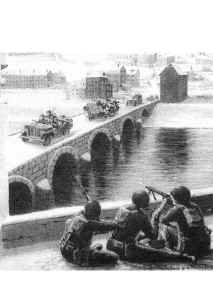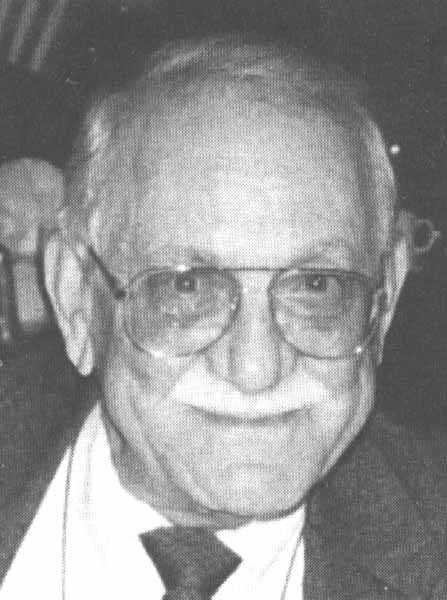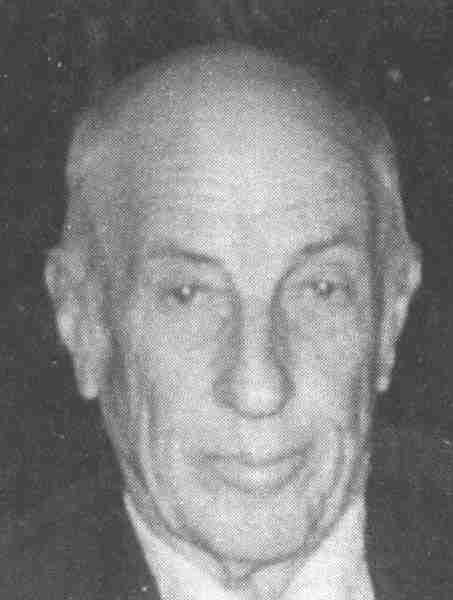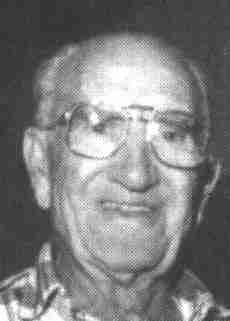|

Stavelot, Belgium, December 19,
1944.
Five American Jeeps filled with Germans in GI uniforms made a
wild dash to cross the bridge.

Cpl. Henry M. Stairs, Jr.
Headquarters Second Battalion, 117th Infantry
The beautiful painting
above was painted by Hank Stairs. His assignment in communications
gave him a certain amount of mobility. While he was not witness to
the incident depicted in the painting, he had become very familiar with
what happened by means of personal accounts. Also, he had made
sketches of the bridge. Heavily armed German soldiers in U. S.
uniforms driving American jeeps attempted a dash northward across the
bridge. Members of A Company, 117th Infantry under orders to kill
any who crossed the bridge, stopped the surprised Germans. Later Lt.
Leland Cofer, assigned to blow the bridge, took out the span at the near
end of the bridge thus denying its use to the enemy.
Hank originally prepared
the painting for the Camp Blanding Museum. However he later made a
copy for the museum so that the original could be presented to the Town of
Savelot. The original was presented to J. Monville, Le Bourgmestre
of Stavelot in a ceremony on 15 September 1999. In that ceremony,
Hank surprised everyone present by making the presentation in rather
excellent French, thus turning the tables on Denise Oger, interpreter for
C. R. I. B. A. who then had to translate to English for the benefit
of Old Hickory persons on the European Tour. C. R. I. B. A. stands
for the Center of Research and Information on the Battle of the Bulge.
HE BLEW THE BRIDGE!

Lt. Leland E. Cofer
A Company, 105th Engineer Battalion
As Platoon Leader, he tells his story of the blowing of the bridge at Stavelot.
On 17 December, our Division was detached from 9h' Army near Aachen and reassigned to V Army near Malmedy. We moved out in late afternoon and spent all of that night inching our way south in vehicles on a crowded road. We were harassed a good part of the night by German aircraft who dropped lots of flares and flew back and forth over our column, but dropped very few bombs. Several other Divisions, both Infantry and Armored, were also headed for the Ardennes to counter the German offensive.
By the end of 18 December, the 117th Infantry Regiment, to which our engineer company was attached in support, had attacked the town of Stavelot, Belgium and pushed the enemy back across the Ambleve River.
A multi-arch stone bridge across the river in the town was still intact. It was the only bridge for several miles - a bridge the Germans needed to continue their offensive.
If the Germans could capture the bridge intact at Stavelot and hold it, their tanks and other armored units could cross and run through the hastily defended areas north of the Ambleve River. This in turn could result in the capture of Leige and Antwerp, their initial objectives.
About noon on 19 December, I received orders to go to Stavelot to destroy the bridge. Reconnaissance was the first thing to be done.
I took off in a jeep with my driver, T/5 John Barone. We drove as close to the river as I dared, then proceeded on foot to near the bridge. This was the front line of the 117' Infantry who were "holed up" in houses and basements along this line. Jerry held all the ground south of the river and had at least one tank and infantry with other weapons, covering the bridge. The bridge was in "no man's land".
In the daytime it would have been instant suicide to approach the bridge in the open. It was completely exposed to German fire. We had to get a good look at the bridge so we could decide how to destroy it and how much explosive would be needed.
By crawling from one house to the next I arrived at an upper story window which gave me an oblique view of the bridge. While standing back from the window to remain unseen, I sketched a rough drawing of the bridge and estimated the length of the spans and thickness of the deck. There was a wrecked US jeep on the bridge and the body of an American soldier lying near our end.
While at my position overlooking the bridge, I was witness to a duel between one of our TD's and the Kraut tank on the south side of the river. After some maneuvering by both combatants, the TD got a couple of rounds into the side of the tank. A few seconds later a smoke grenade was tossed out of the tank hatch and soon followed by the surviving members of the crew who ran into a nearby building. They came out so quickly there was no time to get a shot at them. (This tank is the one pictured on the 31' page of the picture section of the 30' Division history. It was taken from a position very close to where
I observed the bridge).
After returning to my jeep, we drove back up the hill to our Company CP to plan and to organize a demolition crew. We estimated an excessive amount of TNT to be certain, because the charge would just be placed on the top of the deck, nothing like the Engineer School solution. We decided on 1000 lbs. That was 20
fifty-pound boxes of TNT. We placed caps at random in various boxes to insure that all would explode. TNT needs a good shock to set it off. We also built three slow burning fuses, long enough to burn about one minute with detonators and fuse lighters, two more than necessary to guarantee
detonation.
We planned to approach after dark, but didn't want to delay too long because the Germans might be planning an assault to recapture the bridge that night.
We requested artillery fire, through 117th Infantry Headquarters, to be fired at a regular rate mixed with smoke shells into the enemy positions close to the south end of the bridge beginning at the hour we planned to move to the bridge. The firing was necessary to cover our noise, and the smoke to obscure our movement to the bridge. There was glass from shattered windows and doors on the cobblestone streets, making it impossible to walk quietly, especially when carrying 50 lbs. of TNT.
The TNT and the men were loaded into a couple of 6x6 trucks and driven down the hill. When the artillery fire started, we moved to within 3 or 4 blocks of the bridge. We unloaded the trucks, passing out the TNT, one box per man and everybody headed for the bridge on foot. A French speaking soldier was sent to check
the houses and basements near the bridge to advise anyone in them to leave. I do not recall that we found anyone. They had probably left due to the earlier fighting. Our infantry had also been moved back from the bridge.
Staff Sgt. James McKeon, who was killed about a month later and Sgt. Lowell Richardson, who later received a battlefield commission accompanied me, with the rest of the men following.

Sgt. Lowell L. Richardson
We set all the TNT in one stack directly over the thinnest part of the deck in the first span. Having delivered their boxes, the men quickly returned to the trucks. This took 3 or 4 minutes. McKeon, Richardson and myself, on signal, pulled all three fuse lighters simultaneously. We took off disregarding any noise we might make, then a couple of short blocks away, "KA-BOOM!!!". It was a terrific explosion. Stone masonry houses close to the ends of the bridge collapsed. It must have been some shock to any Krauts, exposed or not, on the south side. Our artillery stopped. We were standing along a sidewalk just north of the bridge when Jerry machine gun fire came up the street from the south side. We fell to the ground or jumped through doors or windows into houses until the firing stopped. Luckily, no one was hurt.
It was then necessary to check the bridge to see if the job had been accomplished. Sgt. Richardson and I stole back to the river as quietly as possible and looked over the edge of the hole in the bridge. The first span had disappeared, it was a good gap. As our company commander, Captain James Rice, told Hal Boyle, an AP War Correspondent, "No German tank can broad jump that".
This stalled the German advance at Stavelot. In succeeding nights they attacked our infantry by wading the river in an attempt to drive our troops back,
re-bridge the gap and use it for their Panzer units. The attacks were unsuccessful. |